Sea turtles have been around for millions of years and grace the waters of all the world’s oceans, except the Arctic. Unfortunately, sea turtles face many threats to their survival; some are natural but most are anthropogenic (human) threats. It is estimated that only 1 in 1,000 of sea turtles survive from egg to adulthood.
The status of sea turtles
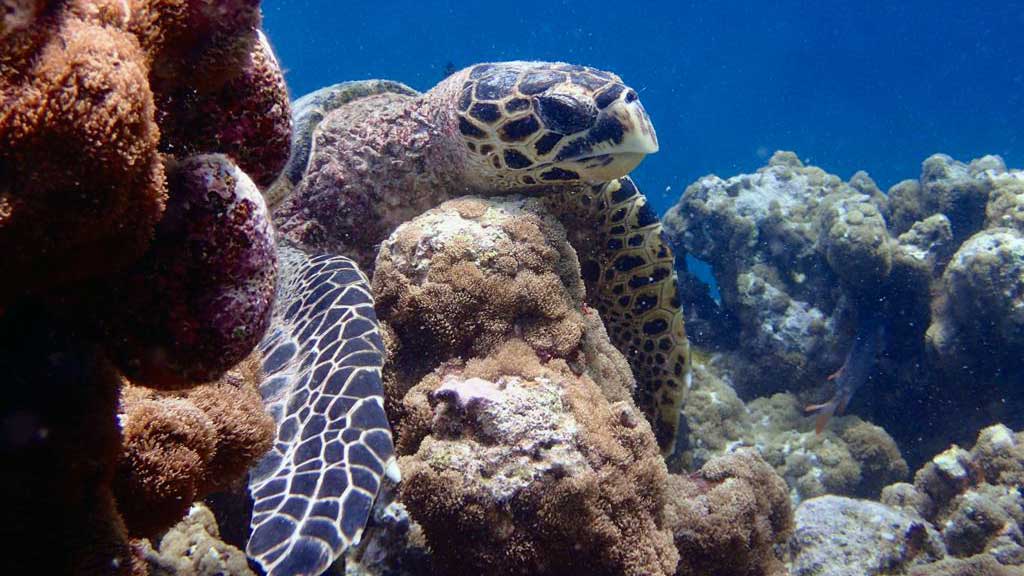
All seven species of sea turtles are listed as endangered by CITES (Convention on International Trade in Endangered Species of Wild Flora and Fauna).
Six of the seven species of sea turtles are classified as threatened with extinction by the IUCN Red List of Threatened Species (International Union for Conservation of Nature and Natural Resources). One species, the Flatback, is not listed due to insufficient data.
IUCN global status:
- Flatback: Data deficient
- Green: Endangered
- Hawksbill: Critically Endangered
- Kemp’s ridley: Critically Endangered
- Leatherback: Vulnerable
- Loggerhead: Vulnerable
- Olive ridley: Vulnerable
Natural threats
Human threats far outweigh natural threats to sea turtles. However, from the moment they are laid as eggs by their mother, sea turtles are fighting for survival. Hatchlings have more predators than adult sea turtles, both on land and in the water.
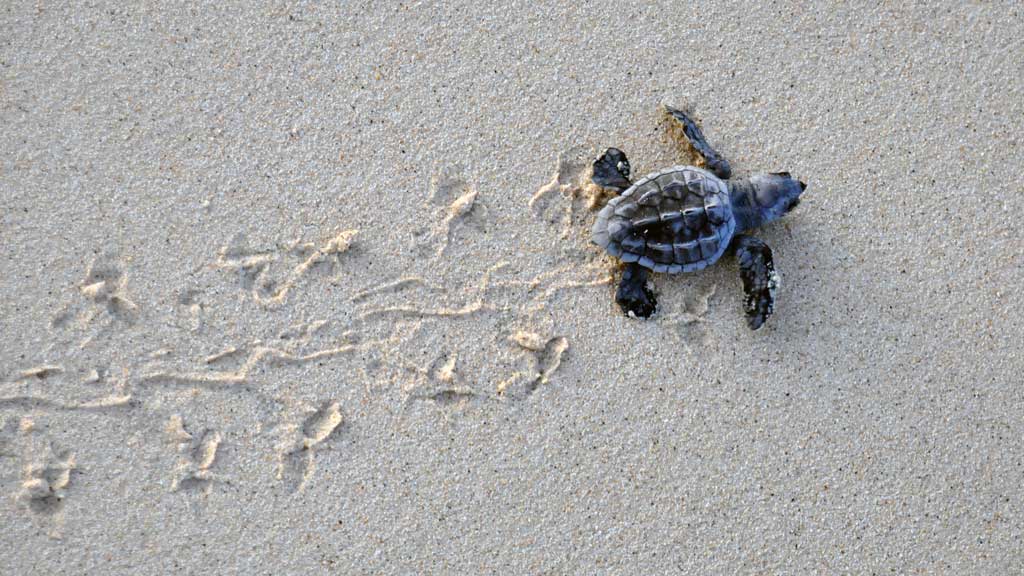
Predation
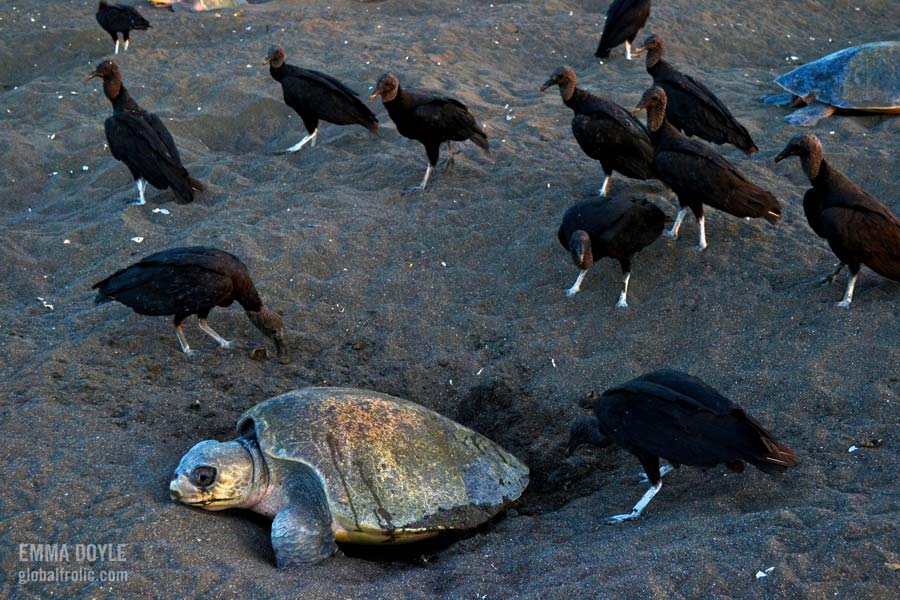
Adult sea turtles have few natural predators due to their size and hard shells. However, sharks, crocodiles, large fish, and occasionally octopus, can attack adult sea turtles. Turtle eggs and hatchlings, on the other hand, are at much higher risk from natural predators. On the beach and on the way to the sea, crabs, birds, and mammals often prey on the eggs and the hatchlings. Once in the water, hatchlings also fall victim to many species of fish.
Though predation of sea turtle nests is often classed as a natural threat, the introduction of invasive or introduced species by humans, such as invasive rats, can exacerbate the effects of predation on sea turtle populations in the future.
Flooding of nests

Sea turtle eggs need to be incubated in a specific set of conditions for proper embryonic development, such as a suitable temperature, an appropriate amount of moisture and the capacity for gas exchange. Naturally, sea turtle nests are at risk of becoming inundated with water, whether that be because of storms, erosion or simply that the nest was laid too close to shore. Regardless, flooding of nests reduces the capacity for gas exchange. Consequently, inundated nests have been shown to have hatching success rates that are 89% lower than non-inundated nests.
Climate change will likely exacerbate this issue. The combination of sea level rise and an increase in heavy rainfall and storm surges in some areas may pose a significant threat to nesting sea turtles, making it increasingly difficult for turtles to find appropriate spaces to deposit their eggs. In turn, this may lead to decreased nesting activity and fewer sea turtles being born.
Anthropogenic (human) threats
Sea turtles naturally have a tough start to life but, regardless, they have still managed to thrive for millions of years. So that begs the question: why are so many populations now struggling? Well, unfortunately, that is largely because of us. Whether sea turtles are directly caught by illegal hunters or fishers, whether their nesting beaches are destroyed, or whether they suffer from ingestion of toxic chemicals, humans undoubtedly pose a grave threat to sea turtle populations all around the world.
Consumption
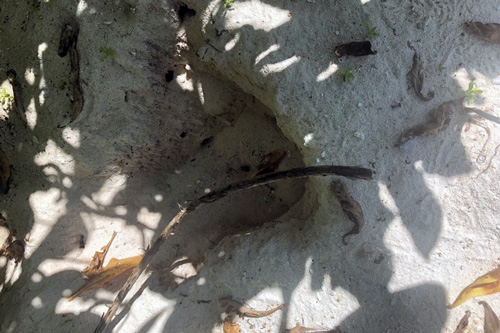
All species of sea turtles have been hunted for their meat or their eggs, as well as for their shell (see below), oil (used in cosmetics) and skin (used as leather).
Despite the legal protection of sea turtles in most countries, hunting sea turtles for meat still occurs around the world. A lack of enforcement, punishment, and public awareness is particularly problematic. The World Health Organization recently advised against eating sea turtle flesh as it may contain Salmonella bacteria, mycobacteria, Leptospires, other bacteria, parasites, trematodes, or high levels of heavy metals and pesticides such as DDT.
Tortoiseshell use
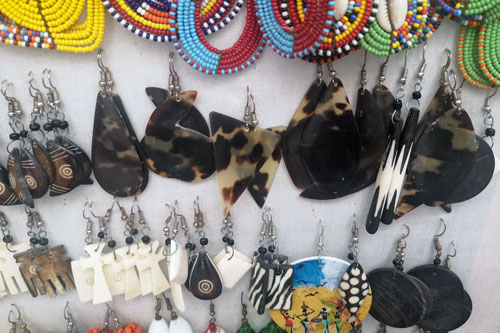
Sea turtles historically have been, and still are, targeted for their beautiful carapace. In the 19th and 20th centuries, the hawksbill’s carapace was heavily targeted for its shell (tortoiseshell) for use in jewellery and ornaments. In recognition of the impact that this was having on hawksbill populations, the species was included on Appendices I (Atlantic population) and II (Pacific Populations) of CITES, the Convention on International Trade in Endangered Species of Wild Fauna and Flora in 1975 (IUCN, 2008).
Sadly, despite a substantial reduction of this trade, the use of tortoiseshell is the primary reason the hawksbill species is now considered critically endangered. Not only have hawksbill populations had to recover from this exploitation, but they have also had to face other anthropogenic threats such as loss of nesting and foraging habitats, bycatch, pollution and ghost net entanglements.
Climate change
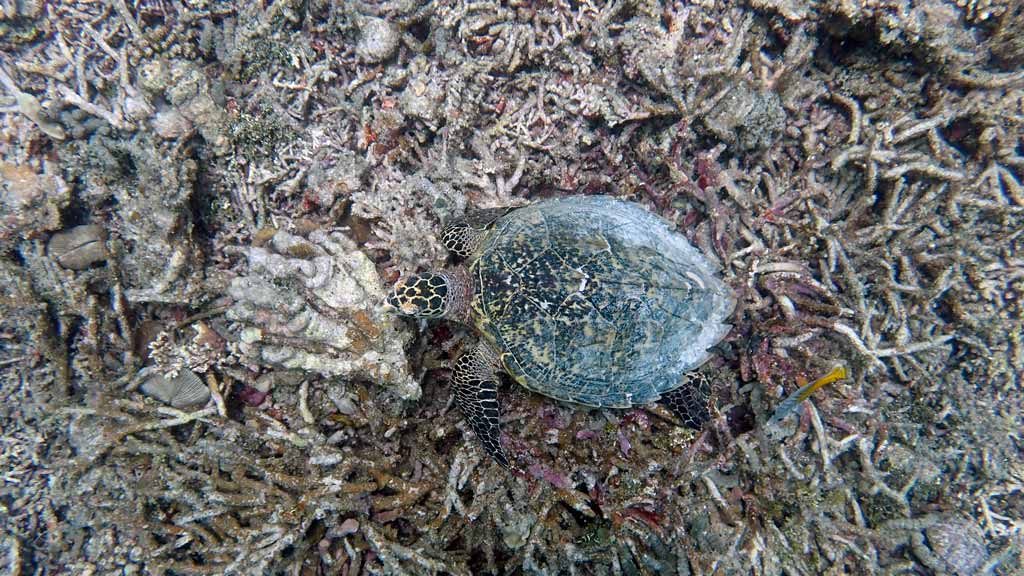
Since sea turtles have a complex life cycle and occupy a range of different habitats, they will likely be, and in some cases already are, heavily impacted by climate change. Climate change may directly affect sea turtle mortality rates or they may indirectly affect populations through alterations to their habitats and food source.
On nesting beaches for example, sea turtles may become threatened by rising temperatures. The sex of a sea turtle is not determined purely by genetics as it is in humans. Instead, the temperature during embryo development will determine whether a male or a female sea turtle hatches. Higher temperatures result in females, whilst lower temperatures predominantly produce males. Increasing sand temperatures on nesting beaches can therefore shift the sex ratio of hatchlings to almost entirely female. As a result, sea turtles may struggle to reproduce and sustain their populations in the future.
As well as this, sea level rise in combination with future increases in extreme weather events can also be detrimental to sea turtle populations. It may be increasingly difficult for turtles to find appropriate spaces to deposit their eggs. With a reduced availability of nesting space comes an increase in accidental destruction of eggs by other females, sub-optimally positioned nests, and exposure to saltwater inundation. Tropical storms and hurricanes have already been shown to reduce hatching success in loggerhead and green turtle nests in Florida.
Other impacts of climate change include the alteration of sea turtle movements at sea (due to changing temperatures and ocean currents), an increased prevalence of disease, and threats to sea turtle foraging grounds, such as coral reefs.
Bycatch
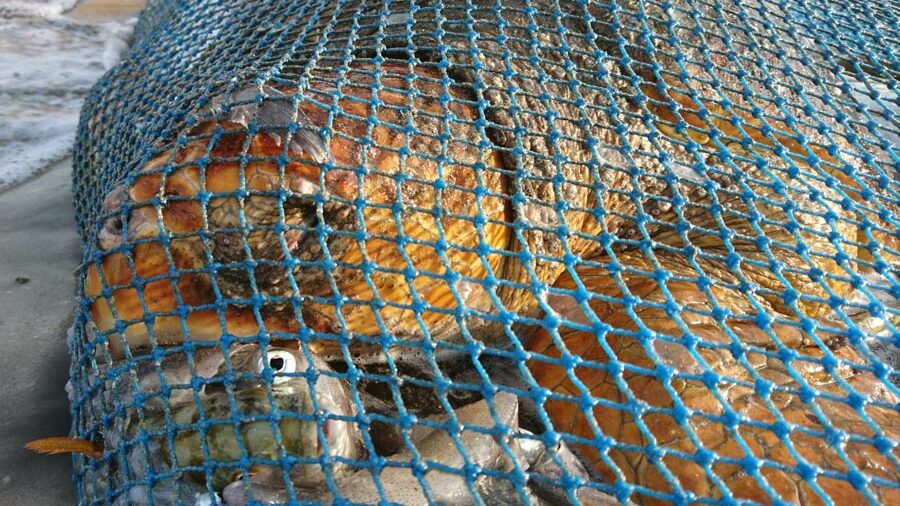
Bycatch (the accidental capture of non-target species in active fishing gear) is one of the greatest threats to sea turtles and many other marine species worldwide. Every year, fishing gear from gillnets, trawls, purse seine nets, longlines, traps and pots capture, injure and kill vast amounts of marine life. A 2010 study by Duke University researchers estimated that as many as 1.5 million sea turtles have been caught in fisheries around the world over an 18 year period. However, the fate of injured turtles caught as bycatch and released is less well known.
Sea turtles can become extremely stressed when trapped in a fishing net and therefore will need to breathe more frequently. If they are stuck in the net itself, or if the net is submerged, they may be unable to reach the surface to breathe, often resulting in drowning. As well as this, the sheer weight of a catch can suffocate the turtle before the net is even retrieved from the water.
Entanglement in ghost gear & marine debris
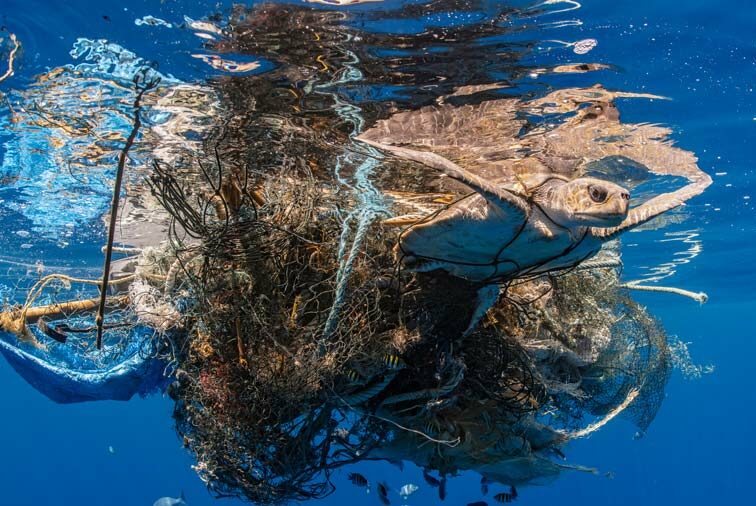
Entanglements in or ingestion of ghost gear is responsible for killing a significant number of marine animals, including sea turtles. Ghost gear is fishing gear that has been abandoned, lost or discarded (ALD), at sea, on beaches or in harbours.
Vessel strikes
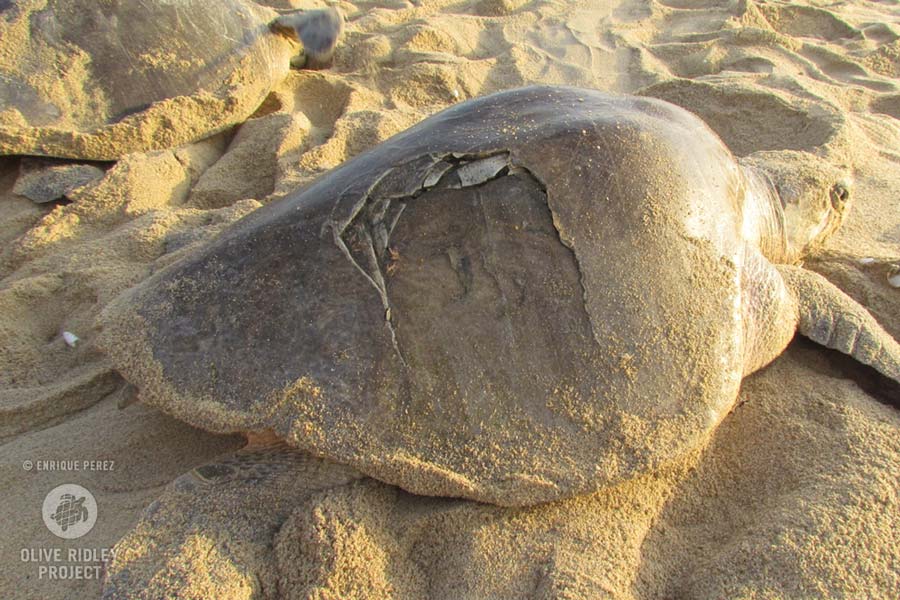
Since sea turtles need to come to the surface to breathe, bask near the surface and often forage in shallow areas, they are vulnerable to boat strikes. Vessel strikes are one of the most common causes of sea turtles stranding in the US with 20-30% of strandings showing injuries consistent with vessel strikes in Florida (NOAA). Injuries include damage to the carapace, buoyancy syndrome, broken limbs and even death. Often these cases go unreported, making it difficult to assess the impact at a population level.
Coastal development
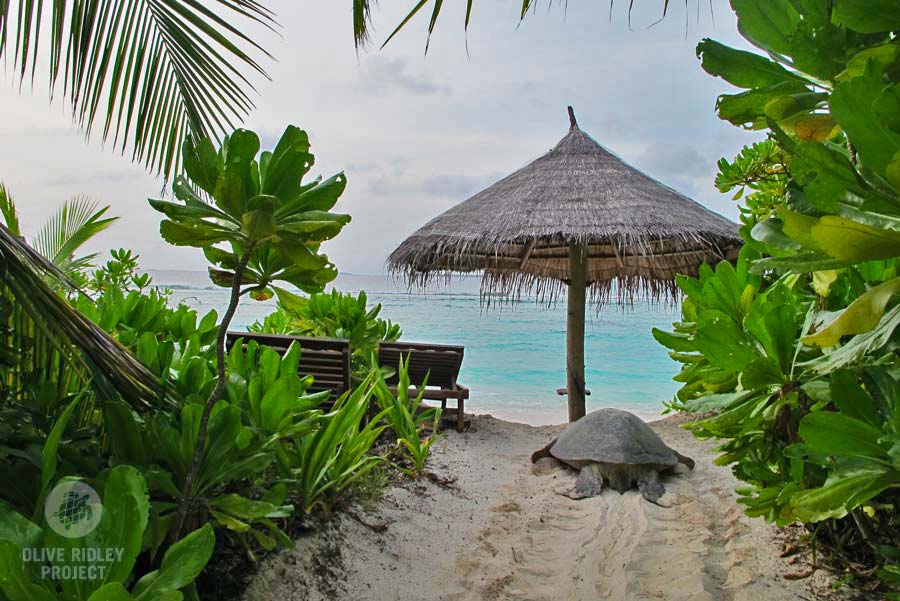
Female sea turtles use natal homing to return to the beach or area where they were born. Unfortunately, when they return (often over 20 years after they took their first steps) the beach looks significantly different to how it used to.
Many nesting beaches have been substantially altered in recent years, now with buildings, beach furniture, or even the complete reconstruction of the beach itself. This can often lead to the nesting female becoming disorientated, lost or stuck.
Sea turtles have been observed falling into swimming pools, wandering down concrete paths and even becoming stranded on a runway. Consequently, it is extremely important that we identify nesting hot spots around the world and ensure that the necessary protection is put in place so as to not restrict sea turtles to unsuitable beaches elsewhere.
Light and noise pollution
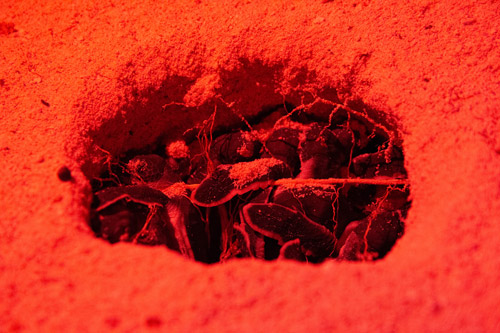
As demonstrated above, nesting sea turtles must now compete with tourists and coastal residents for the use of beaches. Sea turtles are also extremely sensitive to both light and noise, which can drive them away from critical foraging and nesting habitats.
Persistent and abrupt low-frequency noise, such as seismic tests for energy exploration, can not only disturb turtles but even damage their hearing. Unfiltered artificial lights on nesting beaches can cause confusion and disorientation of female turtles and hatchlings. It can also deter adult turtles from nesting in the first place. Even just someone walking with a phone on the beach can spook nesting females and prevent them from emerging the beach or cause them abandon their nesting attempt.
Light pollution can be particularly disorientating for hatchlings. Sea turtle hatchlings normally navigate towards the sea by the reflection of the moon on the water. Artificial lighting can instead lead them inland to be killed on roads or by predators, or to die of dehydration and exhaustion.
Plastic ingestion
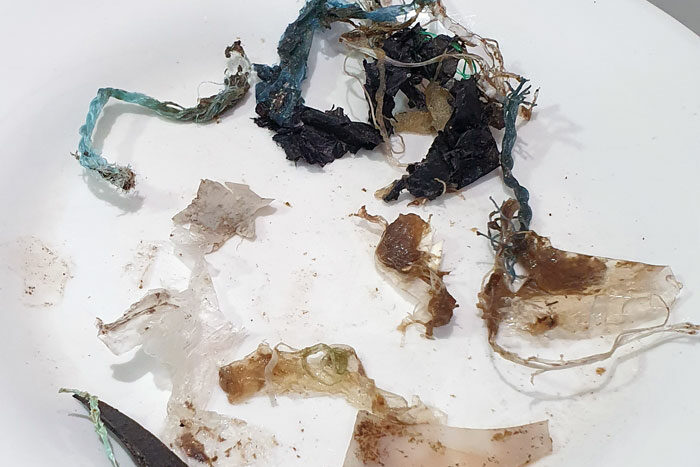
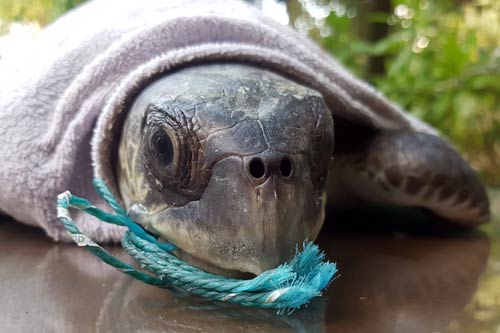
A study published in 2015 estimates that eight million metric tons of plastic waste end up in the ocean every year. Most of the plastic waste consists of everyday items such as bottles, bags, wrappers, balloons, and straws. However, the majority of plastic waste floating in the ocean consists of broken down plastic fragments called microplastic. The same study estimates that there are between 93,000 and 236,000 metric tons of microplastic in the ocean. Marine debris poses a threat to a wide variety of marine animals, killing more than an estimated 100 million every year.
It is estimated that 52% of all sea turtles in the world have ingested plastic, though this is likely much higher in certain regions. With so much plastic in our oceans, the likelihood of ingesting plastic is ever increasing! Sea turtles were among the first marine species documented to be ingesting plastic, and this has been recorded in every region they live and in all seven species.
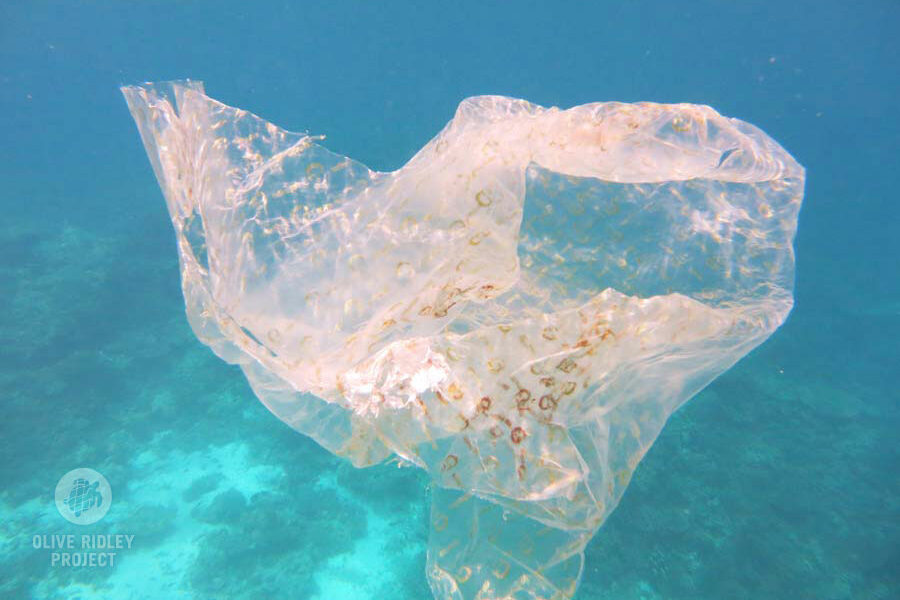
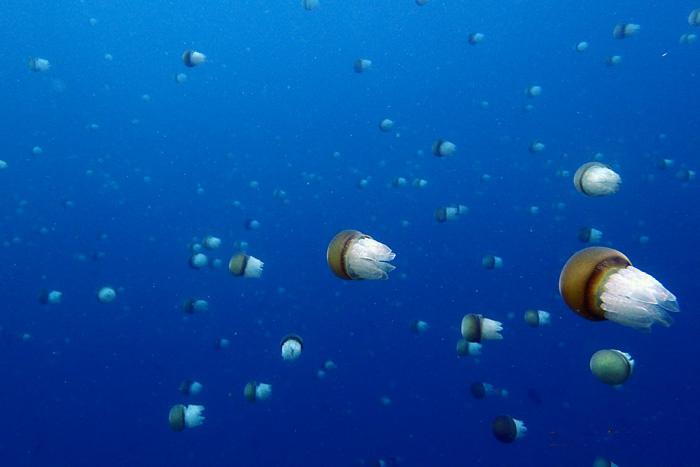
Clear, flexible plastic film, bags and balloons are also often eaten by sea turtles because they closely resemble food items such as jellyfish. One study found that plastics that have been in seawater long enough to accumulate algae, microbes, plants and animals were even sought after by sea turtles, attracting their interest as much as real food.
Ingestion of plastics can be lethal such as by perforation of the gastrointestinal tract, obstruction, sepsis, toxicity and starvation. But other times, plastic can simply pass through the gastrointestinal tract with no problems.
Chemical pollution
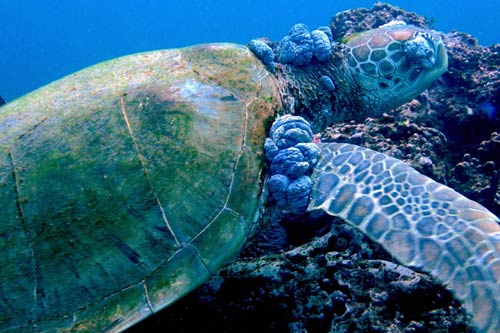
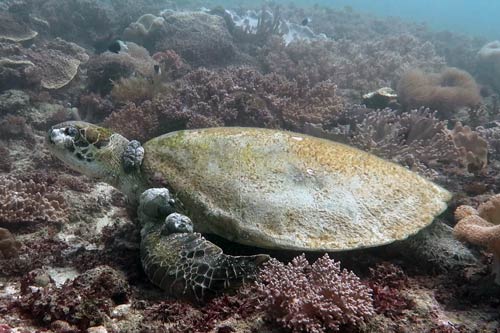
Not only do turtles face pollution in the form of ghost gear and plastic pollution, they are also threatened by chemical pollutants. Pollutants include things like heavy metals (including mercury) and PCB’s, as well as oil from spills and urban runoff of chemicals, fertilizers and untreated waste.
Pollutants may concentrate in the liver, kidneys, tissues and eggs of sea turtles. A build up of these chemicals in tissues overtime can lead to immuno-suppression (often associated with fibropapillomatosis disease), disruption of endocrine function, respiratory inflammation, gastrointestinal ulceration, organ damage and reproductive failure in sea turtles.
Oil spills tend to accumulate along the food chain and therefore affect sensitive habitats, such as seagrass beds, mangroves and coral reefs, on which sea turtles depend. On a larger scale, oil from offshore spills concentrate along convergence zones (where currents meet), which are important areas for young sea turtle development. These may also accumulate on nesting beaches, thereby impacting nests, nesting females, and hatchlings.
A large percentage of dead hatchlings whose stomach contents have been examined have ingested tar balls (pieces of weathered oil).
The future for sea turtles
When we think of the multitude of threats that sea turtles face all around the world, it is unsurprising that so many populations are subject to major challenges. But fortunately, it is not too late. Many organisations like the Olive Ridley Project work hard to help safeguard sea turtle populations and their habitats for generations to come. Here are some ways you can help:
References:
- Ackerman, R.A., 1997. l 997. The nest environment and the embryonic development of sea turtles. The Biology of Sea Turtles. CRC Press. Boca Raton, Florida, pp.83-106.
- Bickham JW, Iverson JB, Parham JF, Philippen HD, Rhodin AGJ, Shaffer HB, Spinks PQ and van Dijk PP 2007. An Annotated List of Modern Turtle Terminal Taxa with Comments on Areas of Taxonomic Instability and Recent Change. Chelonian Research Monographs 173: 173-199
- Dodd C 1988. Synopsis of the biological data on the loggerhead sea turtle. Ecology 88: 1-119.
- Eckert KL, Wallace BP, Frazer JG, Eckert SA and Pritchard PCH 2012. Synopsis of the Biological Data on the Leatherback Sea Turtle (Dermochelys coriacea). Biological Technical Publication BPT-R4015-2012, US Fish & Wildlife Service.
- Foley, A.M., Stacy, B.A., Hardy, R.F., Shea, C.P., Minch, K.E. and Schroeder, B.A., 2019. Characterizing watercraft‐related mortality of sea turtles in Florida. The Journal of Wildlife Management, 83(5), pp.1057-1072.
- Frazer, N.B., 1986. Survival from egg to adulthood in a declining population of loggerhead turtles, Caretta caretta. Herpetologica, pp.47-55.
- Guillette LJ 1993. The Evolution of Viviparity in Lizards. BioScience 43: 742-751.
- Harry JL and Briscoe DA 1988. Multiple paternity in the loggerhead turtle (Caretta caretta). The Journal of Heredity 79: 96-99.
- Hirth HF 1997. Synopsis of the Biological Data on the Green Turtle Chelonia mydas (Linnaeus, 1758). Vol 2. Fish and Wildlife Service, US Department of the Interior.
- Hudgins J, Mancini A and Ali K 2017. Marine Turtles of the Maldives: A field identification and conduct guide. An IUCN Publication funded by USAID.
- Lee PLM and Hays GC 2004. Polyandry in a marine turtle: Females make the best out of a bad job. PNAS 101: 6530-6535.
- Lindborg, R., Neidhardt, E., Witherington, B., Smith, J.R. and Savage, A., 2016. Factors influencing loggerhead (Caretta caretta) and green turtle (Chelonia mydas) reproductive success on a mixed use beach in Florida. Chelonian Conservation and Biology, 15(2), pp.238-248.
- Lohmann KJ, Lohmann CMF, Ehrhart LM, Bagley DA and Swimg T 2004. Geomagnetic map used in sea-turtle navigation. Nature 428: 909-910.
- Mortimer, J.A & Donnelly, M. (IUCN SSC Marine Turtle Specialist Group). 2008. Eretmochelys imbricata. The IUCN Red List of Threatened Species 2008: e.T8005A12881238.
- Mortimer, J.A., 1990. The influence of beach sand characteristics on the nesting behavior and clutch survival of green turtles (Chelonia mydas). Copeia, pp.802-817.
- Pfaller, J.B., Goforth, K.M., Gil, M.A., Savoca, M.S. and Lohmann, K.J., 2020. Odors from marine plastic debris elicit foraging behavior in sea turtles. Current Biology, 30(5), pp.R213-R214.
- Piniak WED, Mann DA, Harms CA, Jones TT and Eckert SA 2016. Hearing in the Juvenile Green Sea Turtle (Chelonia mydas): A Comparison of Underwater and Aerial Hearing Using Auditory Evoked Potentials. PLoS One: DOI:10.1371/journal.pone.0159711 1-14.
- Reichart HA 1993. Synopsis of biological data on the olive ridley sea turtle Lepidochelys olivacea (Eschscholtz 1829) in the western Atlantic. NOAA Technical Memorandum NMFS-SEFSC-336.
- Schäuble C, Kennett R and Winderlich S 2006. Flatback Turtle (Natator depressus) Nesting at Field Island, Kakadu National Park, Northern Territory, Australia, 1990-2001. Chelonian Conservation and Biology 5: 188-194.
- Schuyler, Q.A., Wilcox, C., Townsend, K.A., Wedemeyer‐Strombel, K.R., Balazs, G., van Sebille, E. and Hardesty, B.D., 2016. Risk analysis reveals global hotspots for marine debris ingestion by sea turtles. Global Change Biology, 22(2), pp.567-576.
- Shaw, K.R., 2013. Effects of inundation on hatch success of loggerhead sea turtle (Caretta caretta) nests (Doctoral dissertation, University of Miami).
- Spotila JR 2004. Sea Turtles: A Complete Guide to Their Biology, Behaviour and Conservation. The John Hopkins University Press, Baltimore, USA. Whittow G and Balasz G 1982. Basking Behaviour of the Hawaiian Green Turtle (Chelonia mydas). Pacific Science 36: 129-139.
- Wallace, B.P., Lewison, R.L., McDonald, S.L., McDonald, R.K., Kot, C.Y., Kelez, S., Bjorkland, R.K., Finkbeiner, E.M., Helmbrecht, S.R. and Crowder, L.B., 2010. Global patterns of marine turtle bycatch. Conservation letters, 3(3), pp.131-142.
- Wang, H. and Rutherford, D., 2015. Assessment of energy consumption by liquefied natural gas carriers and impact of improving the energy efficiency on natural gas supply Chain. Transportation Research Record, 2502(1), pp.40-47.
- Witzell WN 1983. Synopsis of biological data on the hawksbill turtle, Eretmochelys imbricata (Linnaeus, 1766). No. 137. Food & Agriculture Org.
- Wood, D.W. and Bjorndal, K.A., 2000. Relation of temperature, moisture, salinity, and slope to nest site selection in loggerhead sea turtles. Copeia, 2000(1), pp.119-119.
- Wyneken J 2001. The Anatomy of Sea Turtles. NOAA Technical Memorandum NMFS-SEFSC-470.

